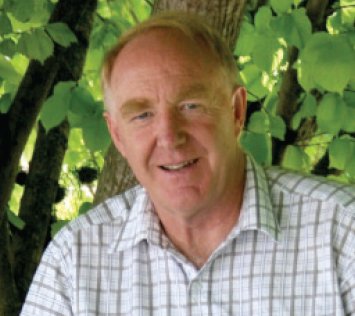You must be logged in to post a comment.
Archive
 When conventional science talks of the trial work done on dicalcic phosphate in the past, it is typically data collected from a ‘vertically integrated’ approach to soil science.
When conventional science talks of the trial work done on dicalcic phosphate in the past, it is typically data collected from a ‘vertically integrated’ approach to soil science.
This meant dicalcic phosphate was subjected to grass growth trials, mostly caged off from stock and cut by hand, and its data used to satisfy the economical farm model. But this didn’t take into account the livestock above the ground or the effect of the biology within it.
It didn’t take into account the overall stock performance, the change in grazing patterns, the question of energy efficiency or the minimal effect on the environment the dicalcic phosphate was having.
It might have satisfied the high-analysis fertilisers but, without the opportunity to show its full features, a product like Hatuma Dicalcic Phosphate® seemed destined to fail in comparison.
Showing real value
Yet, despite the best attempts of many farm advisors warning against Hatuma Dicalcic Phosphate®, for the last 50 years, more and more livestock farmers have swapped their high-analysis fertiliser for it. Why? Because farmers take a ‘totally integrated’ approach to business. Sure, growing grass to feed stock year-round is important but, to farmers like you, applying a product that also aids in the many other factors like improved pasture utilisation, stock health, minimisation of environmental footprint and cost effectiveness is where the real value starts to show. This was the original vision my father had back in the 1960s when he recognised the efficiencies to be gained from Hatuma Dicalcic Phosphate®, and it has become the driving force of my motivation over the last 35 years. Thank you. You have supported our product through a period of fertiliser use that many will look back on and deem as the ‘easy days’. Now is the time where the rest of the industry is challenged to seek more ways to find efficiency in the fertiliser game. They are looking for leaders: other farmers to show the way. Now is the time where your on-farm experiences from dealing with a product that ticks the boxes of the future are most needed. And we want to make sure you have all the support you need.
Whole-farm results
The Farming for the Future Research Programme began in 2009 and takes in 10,500ha spread over 12 North Island farms. It is run by independent Christchurch-based businesses, T he AgriBusiness Group and Land R esearch Services: a team of specialists who have explored what’s happening under the soil and above it, and how it translates through to the bottom line, quality and the environment. Already, preliminary results are suggesting that Hatuma Dicalcic Phosphate® farms are carrying higher stocking rates on a lot less phosphate input than their respective regional averages. While this is radical in itself, we will not stop there. We have confidence borne from 50 years of a range of whole-farm results, and the efficiencies to be scientifically vindicated go much further.
A legacy for better performance
The recent run of droughts (predicted to become more common), volatile fertiliser prices, environmental regulations on nutrient overload and higher farm input costs, have made the traditional fertiliser model redundant. But we don’t have to re-invent the wheel, just make it perform better. While most fertiliser recommendations are still attributable to the National Development economic period that ended in 1984, for the last 26 years I have found an increasingly large degree of empathy with the legacy left by the old science educators of my father’s time in explaining most of the results obtained on your farm – New Zealand soil science stalwarts like C. During, R .M. Langer, P.D. Sears, L.J. Wild and I.D. Blair. With so many now searching for the truth it can become confusing, but I have now realised that the whole truth is within the journey each one of us is on together.


 520 Maharakeke Rd, Waipukurau
520 Maharakeke Rd, Waipukurau

 0800 80 65 65 /
06 858 8567
0800 80 65 65 /
06 858 8567 06 8588018
06 8588018
Leave a Reply